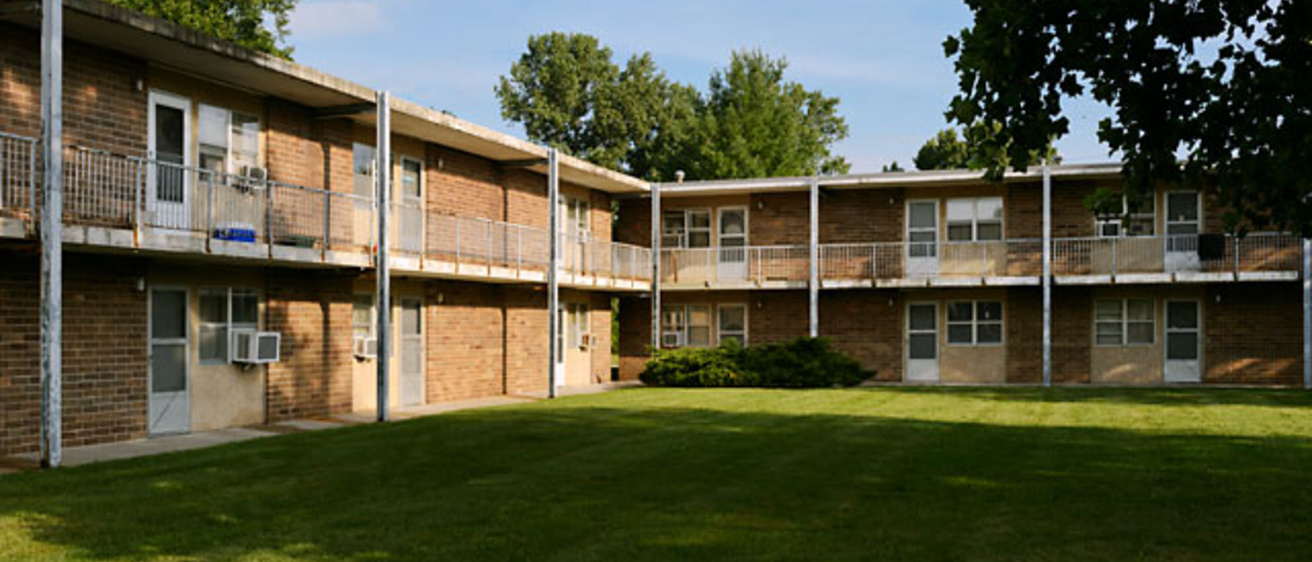Tucked away among shade trees and expanses of lush, green grass on the west side of the UI campus stand the 54 two-story, brick-and-concrete buildings that make up the Hawkeye Court Apartments.
Well, stood. Demolition of several of the buildings began in June, and the rest will come down in 2014, when leases in the remaining buildings are up.
For 45 years, the university-run apartment complex has provided an affordable housing option for students, many of whom are graduate students with families or are international students—or both. Located off of Mormon Trek Boulevard, between Finkbine Golf Course and Hawkeye Recreation Fields, the 30-acre campus site is a comfortable distance from the fray of downtown Iowa City.
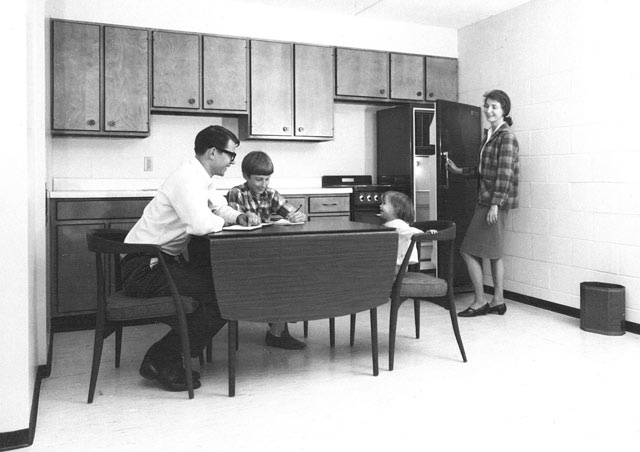
But the facilities are past their prime. The 1960s-era apartments, which were grandfathered to changes in building and fire codes, are under-insulated in the winter and overheated in the summer, and the roofs and outdoor walkways are in continual need of repair. After several years of reviewing options, UI officials contracted with private firm Balfour Beatty to construct and manage at the site a new complex of 270 one- and two-bedroom units, which it will rent at market rates.
“The UI worked hard to keep the apartments online because of the cost—we realize every dollar matters to students—but the buildings had become less than appropriate,” says Von Stange, assistant vice president for student life and senior director of University Housing & Dining. “Replacing them was a difficult decision, but it was the right thing to do.”
In fact, eight of the buildings have been unoccupied since they sustained flood damage in 2008, some taking on a foot of water.
The apartments are simple (painted cinder block walls and vinyl tile floors), convenient (ample parking and Cambus service), and cheap (monthly rent for a two-bedroom unit in 2012 was $480). But for many former residents, Hawkeye Court meant much more.
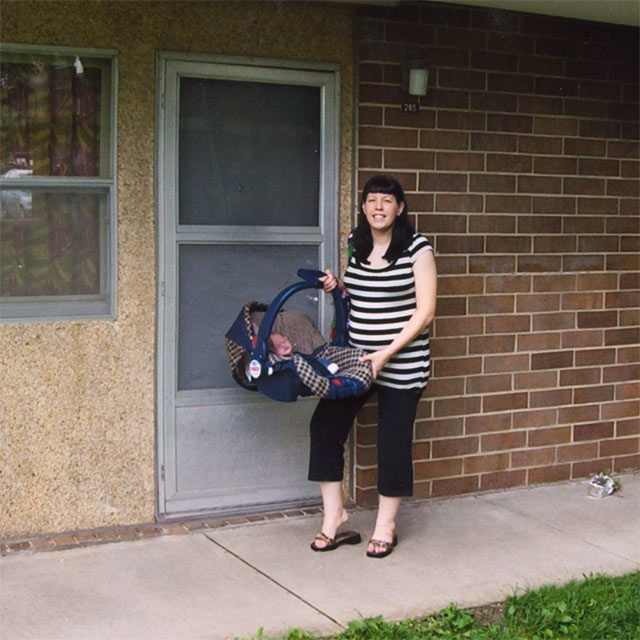
A fitting first home
For Anne Wilmoth (B.A. ’06), who spent two years in a ground-floor apartment as an undergraduate, it was the first home she and her high school sweetheart shared as a married couple—and their first as a family.
“Our oldest daughter was born while we were there, so it will always be special to us,” she says.
Wilmoth signed a lease sight-unseen based on her experiences growing up in married student housing at the University of Northern Iowa, and admits she was glad she hadn’t seen the apartments first.
“With the pale cinder block walls and the high, narrow windows in the bedroom, it looked like a minimum-security prison,” she laughs, “but once we moved our stuff in, it was fine. Actually, we had moved from a 400-square-foot apartment so it felt luxurious.”
As a young couple on a budget, Wilmoth says she appreciated the opportunity to reuse items that were abandoned at the end of the year as residents left the university—and the country.
“Many of the international students would graduate, fly home, and leave their belongings here,” she explains. “We picked up an unwanted washing machine, a leather jacket, and a winter coat, and there were always kids’ toys.”
Tim Krumm (J.D. ’86) secured a second-floor apartment after he got married and enrolled in the UI College of Law. He and his wife had a kitchen full of wedding presents, and they decorated with hand-me-down furniture and hand-made curtains. The apartment’s shortcomings, he says, were easily overlooked.
“We’d only lived in dorm rooms, so we didn’t know any better,” says Krumm, recalling how he addressed the lack of a shower by attaching a hose to the bathtub faucet. “We knew it wasn’t going to last forever, so we thought of it as an adventure. We were newlyweds. We had beer and pizza. Life was good.”
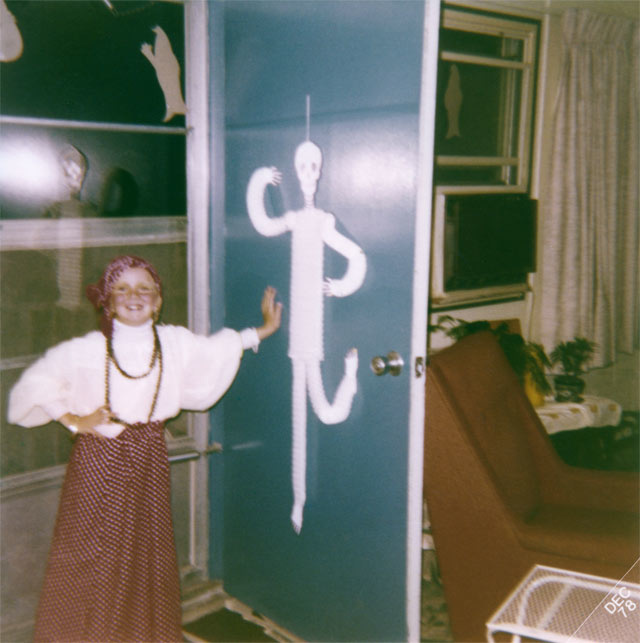
A happy childhood
Although Jennifer Wilkins (B.B.A. ’95) is a UI graduate, her stint as a Hawkeye Court resident was as a child, when she spent five years at the complex while her mother earned a degree. She says it was an ideal place to grow up.
“I had tons of friends around all the time, a huge sandbox in my front yard, a volleyball court out back, and a playground where I lived all summer,” she says. “I remember the field turning into a beautiful yellow carpet of dandelions in the summer, sneaking out to the Amoco station to get nickel gumballs, and building forts in the brush near the train tracks.”
With so many children populating the complex, Wilkins says, Halloween was a much-anticipated occasion; expectations of a hefty haul of sugary snacks usually were met after trick-or-treating at some 500 apartments. Looking back, she says she realizes how valuable the Hawkeye Court experience was for her mother.
“She was a single mom making her way through school. Having appropriate, affordable housing probably allowed her to graduate,” she says. “Plus, everyone there was in the same boat, so there was a lot of child-care swapping. That kind of support is priceless.”
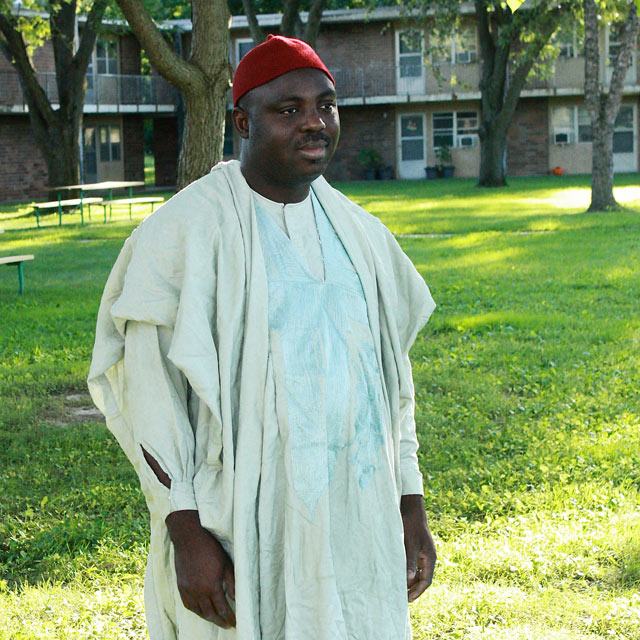
A friendly environment
Sunday Goshit (M.A. ’06, Ph.D. ’09, M.S. ’12), who came to Iowa from Nigeria for graduate study, also encountered a welcoming community at Hawkeye Court, something he, his wife, and their four children found invaluable.
“Coming from another country or culture is a challenge in itself, so being able to raise my children in a safe place was important,” he says. “I was very comfortable there, and I will cherish that.”
The friendships Goshit made during the 10 years he called Hawkeye Court home will last a lifetime, he says.
“It wasn’t just having other international students around, it was how people there were willing to get to know you. They were all going through the same adjustment process,” he says. “I made so many good friends that I could easily travel to China or Malaysia. And though I’ve never been to another country in Africa, today I could go to Kenya, Zimbabwe, or South Africa and call a friend to pick me up at the airport.”
Goshit also appreciated that his children were exposed to other cultures. But one of his sons experienced another, unexpected benefit of living at Hawkeye Court.
“Because of the proximity of the apartments to the soccer pitches, my youngest son has now a full athletic scholarship at Drake University,” he says. “A friend took him over to a club team practice one day and when the coach saw him play, he asked my son to bring me the next day. He wanted my son on his team and when I told him we couldn’t afford the fee, the coach offered him a scholarship. He was named the 2013 High School Soccer Gatorade Player of the Year in Iowa, and now he’s thinking about turning pro. I credit that to Hawkeye Court.”
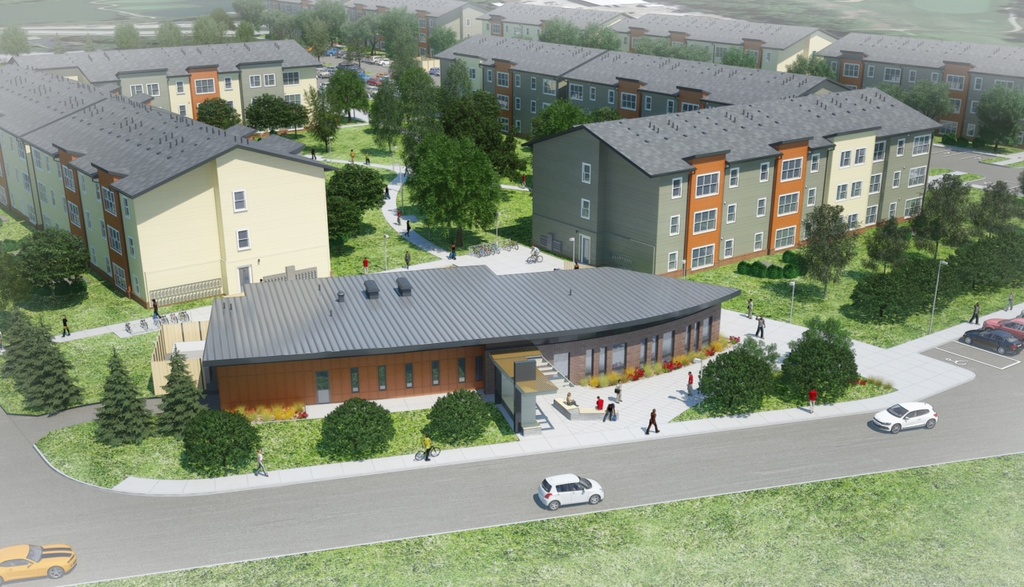
What’s next
Hawkeye Court’s remaining residents will have the opportunity to lease apartments in the first of the new buildings when it opens in 2014 (a cluster of three-story buildings is planned at the site). Balfour Beatty conducted student focus groups before designing the new space, and University Housing & Dining staff members insist that residents will continue to enjoy many of the same benefits, including Cambus service. There also will be a community center on site with laundry and fitness areas as well as a multipurpose room.
Helen Baker, who has served as manager of University Apartments for 20 years, will assist residents as they consider their housing options—something she had to do when the complex was evacuated in 2008 during the floods, and will have to do again when the nearby Hawkeye Drive Apartments eventually face the same fate as Hawkeye Court. She, too, will miss the complex when it’s gone.
“I have gone to each apartment before renting it to someone new, to make sure it’s in good shape,” she says. “Whenever I’m over there, I see the faces and the families that have lived there. It’s nostalgic.”
